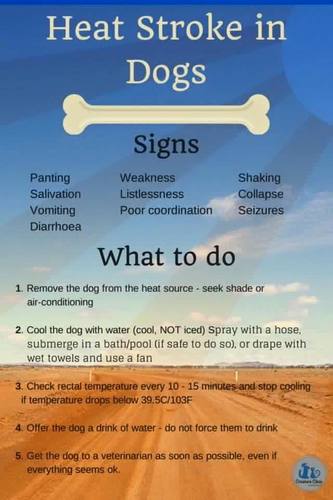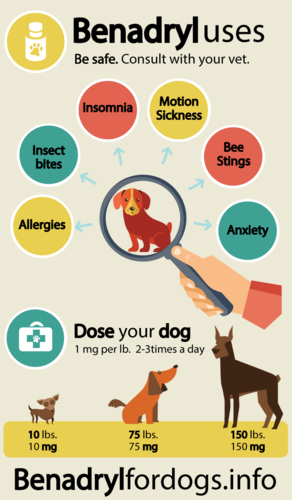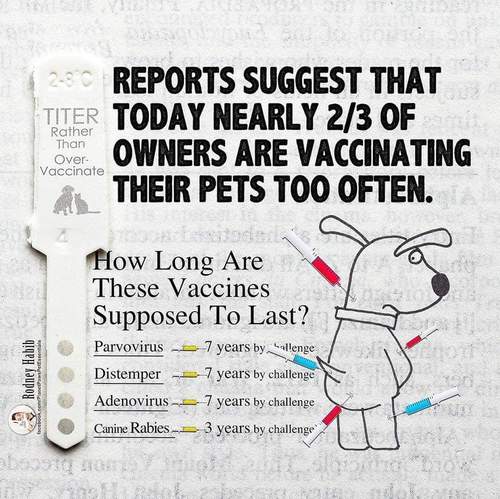Pug Care & Health
General Care
Food
Our adult Pugs are fed both Wholesomes Lamb & Wholesomes Beef dry dog foods.
Our Pug Puppies are fed Wholesomes Puppy dry dog food.
Our Pugs are free-fed (access to food 24/7). Pugs have a reputation of being over eaters and becoming obese. We have NOT had that issue with any of our pugs. We believe over eating and scarfing food most likely is the result of scheduled meals and taking their food away. If your Pug does become over weight we suggest more exercise and mix some healthy fruits and vegetables into their food (they are great for treats as well).

Always have plenty of water available for your puppy at all times.
Do Not Feed Soy! When soy filler is mixed with water it will expand and can cause gastric torsion that may be fatal to your pug.
Socialization
Socialization is a must to a happy pug and a happy household. Our puppies are born and raised in our living room/kitchen. They are exposed to the hussle and bussle of everyday life from the day they are born until they go to their new homes around 8 weeks of age. It is up to you (the new owner) to continue positive socialization skills at home. Once your puppy is fully vaccinated (around 16 weeks old) get your new puppy out to experience the world...parks, other dogs, cats, children, car rides, etc....
Exercise
Flat-nosed breeds, such as Pugs, do not tolerate excessive running, playing, long hikes, or long walks like regular dog breeds. Exercise is great, but keep it to a few short walks a day and limited excessive play time.
Chew Toys
All new puppies will chew on almost anything. Purchase safe chew toys for your puppy. These toys should be almost indestructible. Never buy your puppy any toy he can swallow or get stuck in his throat. Nylon chew toys are safe and are available almost anywhere. Do NOT give your puppy rawhides, greenies, or pig ears, these are not safe chew toys.
Housebreaking
Your crate will be your aid in housebreaking. Put your puppy in the crate when you are not home and to sleep at night. As soon as your puppy is let out of the crate take him outside and do not allow him back in until he goes. Most of all dogs will not soil where they sleep if they are left out often enough. Be consistant and take your puppy outside often. If your puppy makes a poo in the house, put the poo outside where you want your puppy to go to the bathroom. A puppy does not have the ability to hold it or to even grasp the idea of potty training until 12 weeks old and are not considered completely potty trained until a year old and free of accidents.
Over Heating
Pugs overheat easily. This can be from the temperature, excitement, exercise, or stress. Pugs can die from heat exhaustion. Whenever you and your pug are out in warm weather take water with you. If your pug goes down from heat exhaustion, and his tongue turns blue, wet him down with rubbing alcohol or cool water or cool him with ice to bring his body temperature down.

Eyes
Due to the shape of the eye and the position on the face, the Pugs eyes are not very well protected and this can lead to injury and complications. Check the eye for any ulcerations frequently and get your dog to the Vet right away if you see any problems in this area.
Wrinkles
Wrinkles require daily care to keep him comfortable and healthy. Mild soap will work for cleaning out between the wrinkles. Get a damp wash cloth with mild soap and clean well around and under the wrinkles making sure not to get any in his eyes. You should dry the area well. If it is irritated you may want to consider using Desitin cream. It may be required for you to clean the wrinkles up to 2 xs daily if needed depending on how dirty or irritated they may be.
Nails
Clip or dremel your pug's nails regularly to keep them short. I do recommend a grooming hammock if your pug is scared of having his/her nails trimmed. The grooming hammock is a wonderful tool to help gently raise and restrain your pug during nail trimming, although you will need two people or a grooming table in order to use the grooming hammock. A grooming hammock can be expensive and hard to find so I recommend a DIY project...find an old sturdy purse, luggage bag, etc.. that your pug can fit in, cut 4 holes on the bottom for your pug's legs and a larger hole on one side for your pug's head. TaDa a home-made grooming hammock with handles. If you can't visulaize what I am explaining feel free to google or pinterest it.
Dry Nose
If his nose is dry a light coat of Vaseline will help soften it and protect it from cracking.
Swimming
Pugs are not natural swimmers. Extreme caution should be taken when a Pug is around water to avoid drowning. Never leave your Pug unattended near water. A life jacket is a must when pugs are near water.
Poisons
Antifreeze, chocolate, onions, certain lawn chemicals, rodenticides, certain plants, etc…

Bee Stings and other Allergic Reactions
All dog owners should have Benedryl on hand.

Vet care & Vaccinations
Around the clock care by a qualified veterinarian needs to be available. Any veterinarian who will be doing surgery on your Pug should have previous experience with putting Pugs under anesthesia. This is of great importance.
Your new puppy will require an initial series of vaccinations in their first year. Pugs do NOT do well with vaccinations after one year of age. I recommend NO yearly vaccines and ONLY have titer tests preformed each year to determine when vaccinations are needed. *(Titer tests are among the tools that dog owners and veterinarians can use to help minimize the risks of both infectious diseases and unnecessary vaccinations.)
Do not let a vet bully you or make you feel like a bad dog parent because you wish not to over vaccinate your dog! It is your dog and you have the say on what vaccines he/she should receive. The only vaccine required by law is rabies.
DO NOT have your pug vaccinated for Lepto. The Lepto vaccine can be deadly to pugs. My vet won't even carry the vaccine in their office because of the severe reactions that occur in all breeds of dogs.

Spaying & Neutering
Vets are now wanting to spay & neuter earlier and earlier. No dog should be spayed or neutered before 6 months old age! Spaying and neutering too early will deprive your dog of the hormones necessary for their maturation. These hormones are responsible for skeletal growth. If the procedure occurs too early, it may take much longer for your dog’s growth plates to close resulting in a leggy, immature looking dog with bone problems.
- Early spay/neuter causes loss of bone mass.
- Dogs who are spayed/neutered before 6 months have a 70% increased risk of developing hip dysplasia and twice as likely to develop bone and other cancers.
- Dogs who are spayed/neutered too early have an increased chance of developing undesirable behavioral issues such as phobias, fear aggression and reactivity.
- Early spay/neuter triples the risk of developing hypothyroidism and becoming obese.
Health
Elongated Soft Palate
Common in short muzzled breeds, ESP is the obstruction of the dogs airways. The standard snoring of a Pug is a degree of ESP in action, though more severe cases can be heard through sounds such as honking, gasping for air and the blocking of the dogs vocal box. Severe ESP can be corrected through surgery.
Stenotic Nares
SN is found in breeds with short noses including the Pug and is essentially overly soft nasal tissue. When a dog with overly soft nasal tissues breathes, their nostrils collapse, leaving them to breathe through their mouths to get the necessary oxygen. You can identify a dog with SN by noting a foamy discharge when they breathe or excessive breathing through their mouths when they get excited. SN can be corrected through surgery.
Some vets believe that all flat-nosed breeds should have stenotic nares surgery, when in fact most don't need it. I tell everyone, if there are no breathing issues then wait until they are a year old before making that decision. As the head grows so do the nostrils thus no longer needing surgery.
Luxating Patella
Luxating Patella is fairly common in Pugs, and other breeds of small dogs. In simple terms, it is the dislocation of the small movable bone in the knee called the Patella. Mild and severe cases are differentiated by the Patella falling back into place on it’s own in mild cases. Whereas in severe cases, the Patella will fall out of place frequently, even after being popped back in by a veterinarian. Severe cases normally require surgery, not only to correct the problem and relieve pain, but also to prevent the onset of arthritic conditions associated with Luxating Patella. It is important to note that while Luxating Patella can be caused by excess weight, jumping off tall surfaces, constant walking on slippery surfaces, excess rough housing, etc... Keep in mind as well that a Pug diagnosed with Luxating Patella may or may never have a problem requiring surgery. Some Pugs can and do live their entire lives with Luxating Patella trouble free, others require surgery. Only time can tell.
PK (Pigmentary Keratitis)
The deposit of pigment on the white surface of the eyes, PK is the result of many factors that either irritate or inflame the cornea. If the factor causing the inflammation or irritation can be identified, PK can be corrected with surgery.
PKD (Pyruvate Kinase Deficiency)
Pyruvate Kinase Deficiency (PKD) is a disorder that affects red blood cells due to a mutation in an important enzyme needed for metabolism. This defect leads to red blood cell death that results in severe hemolytic anemia. Symptoms of PKD are typically exhibited between four to twelve months of age and can include weakness, lack of energy, rapid heart rate, heart murmurs, pale gums and stunted growth. With further progression, bones and the liver can be affected ultimately leading to death. Dogs with PKD commonly die before the age of 4 years but longevity can vary based on the breed of dog with some breeds able to survive longer than others. While there is currently no cure for PKD, it is possible for affected dogs to have a reasonable quality of life with the proper care. Carrier dogs do not typically show symptoms of the disease and it may be difficult to detect clinical signs of the condition in affected dogs. PKD was originally documented in Basenjis and has since been reported in other breeds, including Dachshunds, Labrador Retrievers, Pugs, Beagles, Cairn Terrier and West Highland White Terriers.
PDE (Pug Dog Encephalitis)
Pug Dog Encephalitis (PDE) is an inflammatory disease of the brain and central nervous system. This disease is specific to pugs; symptoms include seizures, depression, ataxia (a staggering walk), abnormal gait and blindness. It is a rapidly progressing disorder for which there is no cure, and is invariably fatal. All dogs either die or are put to sleep within a few months after the onset of clinical signs. Female pugs are slightly more likely to be affected compared to males. The majority of affected pugs are less than 3 years old, and pugs as young as 6 months can show clinical signs/be affected.
The DNA/Genetic test that is available does NOT diagnose PDE; it determines the risk each individual pug dog has for developing it during its lifetime. There are no CLEAR pug dogs. All pugs carry a pde marker, the test is just to determine how strong the marker is.
- N/N - Pugs that have no copies of the NME/PDE associated markers = (N/N) are at low risk of developing the disease.
- N/S - Pugs that have only one copy of the NME/PDE associated markers = (NS) are also at low risk of developing the disease.
- S/S - Dogs that have two copies of the NME/PDE associated markers. These dogs are at higher risk of developing/being affected by NME/PDE.
Breeders are advised against breeding out the S gene, because 40% of Pug Dogs have the S genotype in a heterozygous (N/S = 29%) or homozygous state (S/S = 11%). Eliminating the S genotype will lead to a considerable loss of genetic diversity and in turn may create other health issues.
*Our pugs are tested for PDE markers and breedings are matched accordingly to help limit the risk of our puppies developing this fatal disease. Little is known what causes PDE and even though we do our best to try to limit the risk, we have no way to predict if one of our puppies will get this disease.
PM (Pug Myelopathy)
Pug myelopathy (PM) is a disease with ataxia and paralysis of the hind legs, but it does not proceed to the front of the body and is pain free. The disease is traumatic for the owners since their dog is completely healthy mentally and aware just like before the illness but it loses its ability to walk. Furthermore, because of the paralysis the Pugs might develop both urinary and fecal incontinence. There are no gene tests that identify PM, and a great difficulty with this disease for breeders is that it commonly debuts late in life. Some studies showed that physical therapy did help a small percent of pugs get some mobility back. Surgery has also been tested and in those dogs most all detoriated within 12 months. The best thing to do when your pug has PM is keep them comfortable.
Listed above are just a few general care & health issues that are commonly found in pugs. It is the responsiblity of the new owner to research the care needed and the common health issues found in the pug breed. We do not cover any of the above listed issues.